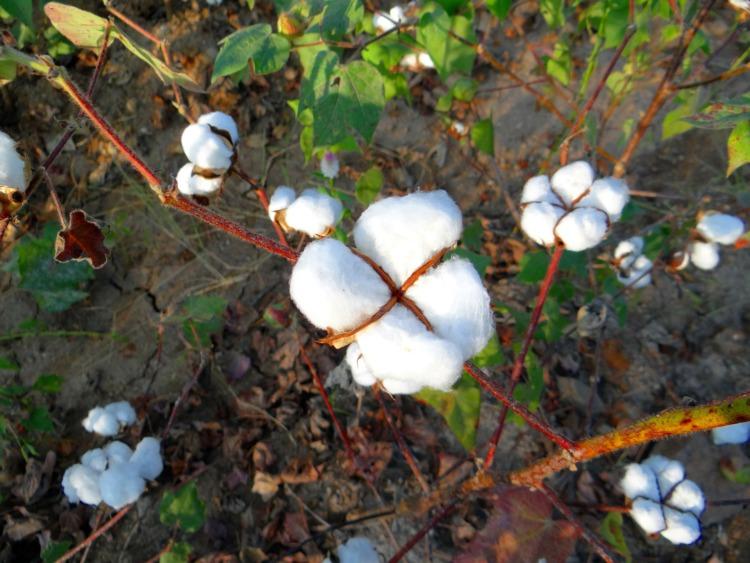NAIROBI, Kenya, Jun 13 – East Africa Community (EAC) partner states need to exploit the potential of exporting raw cotton to international markets.
This is according to Kenya’s Principal Secretary for EAC Dr. Kevit Desai who says the region already produced 100,000 metric tonnes of cotton.
This is lower than its existing potential, which is about 400,000 tonnes.
The Principal Secretary said that EAC exports to the world market currently stand at 8 percent, adding that to increase the volume of exports, value chains such as textiles need to be promoted to boost exports.
“We need to harness science, technology, and innovation to boost exports by investing in greater capacity to produce leather and textiles, and turn a crop like pyrethrum into aerosols,” said the PS.
He added that increased investment in the leather and textile sectors would cater to the growing demand in the region for locally manufactured high-quality clothes and leather products.
Data by the United Nations Conference on Trade and Development (UNCTAD) indicates that cotton occupies just 2.1 percent of the world’s arable land, yet it meets 27 percent of the world’s textile needs. It is also one of the most important traded commodities, with an annual traded value of approximately US$8 billion.
Dr. Desai, who is also the Chairperson of the Coordination Committee, spoke during the 31st Meeting of the Sectoral Council of Ministers of EAC Affairs and Planning.
The PS disclosed that intra-EAC trade currently stands at 15 percent, which he described as being very low compared to other regional economic communities like the EU and the Southern African Development Community (SADC).
“It is encouraging that a confederation for the agricultural sector has already been established. We need to broaden the horizon as far as trade is concerned and increase exports,” he said.
“There is a need for greater aggregation and consolidation to increase the region’s exports to external markets. The EAC Partner States should also create the necessary networks to promote collaboration,” he added.
Asked about the high prevalence of Non-tariff Barriers in the region and their impact on intra-regional trade, the PS said that protectionism of national economies was natural but pointed out that greater potential among the Partner States would open up markets and boost intra-EAC trade.
Cotton in Countries
The sentiments by the PS come at a time when research has indicated that the global textile market size may reach a market value of Sh123 trillion by 2025.
Official data reveals that this will be on account of population growth, rising disposable income levels, and rapid urbanization in developing countries.
Data by UNCTAD indicates that the cash crop generates income and welfare for over 250 million farmers across the globe.
In Kenya, the cotton farming sub-sector received a boost last year after it approved the growth of BT cotton, a crop that has the potential of giving Kenya about Sh200 billion in revenues, in the next five years.
The crop was once Kenya’s second-biggest employer. Data by Kenya Agribusiness and Agroindustry Alliance reveals that National cotton production reached a peak of 38,000 metric tonnes of seed cotton in 1984/1985.
Production declined to 14,000 MT by 1995 following the liberalization of the sector and withdrawal of the Government from the provision of credit and inputs. The Cotton Development Authority estimates currently that there is 350,000 ha in the country suitable for cotton production, with a potential production of 50,000 tonnes annually.
In Tanzania, cotton is a strategic crop, as it contributes substantially to export revenues and employment in the country as well as to farmers’ incomes in the two cotton-growing zones, namely; the Western Cotton Growing Area (WCGA) and the Eastern Cotton Growing Area (ECGA).
In Uganda, cotton is one of the traditional cash crops grown and is used both as an export good and as a raw material for the domestic textile and edible oil industries.
The Cotton Development Organization (CDO) estimates that the cotton value chain employs a total of 2.5 million people, directly and indirectly, in the production and marketing of its primary products in Uganda, such as textiles and garments, as well as its by-products, such as soap, edible oil and animal feed.
According to a study published on Taylor & Francis Online, Ethiopia is one of the African countries that produce and export cotton, cultivating an estimated area of 2.6 million hectares.
Of these 65 percent is found in 38 high potential cotton-producing areas and the remaining 0.9 million ha or 35 percent is in 75 medium potential districts.
Of the total land under cotton cultivation, 33 percent is cultivated by smallholders, 45 percent by private farms, and 22 percent are state-owned farms.
